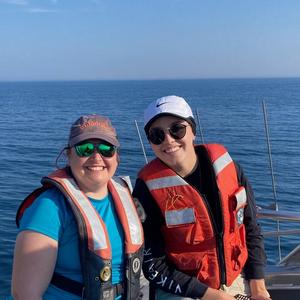In the vast expanse of the ocean, where the depths conceal mysteries and marvels alike, researchers strive to decipher the language of the deep—the intricate vocalizations of whales. Yet, amidst the cacophony of marine sounds, discerning which whale emits which call remains a daunting challenge akin to identifying a single voice in a chorus of voices. Traditional methods of passive acoustic monitoring (PAM) offer valuable insights into whale communication but lack the precision needed to attribute specific calls to individual animals. However, recent advancements in technology have ushered in a new era of discovery, enabling researchers to employ simultaneous acoustic tagging to unravel the enigmatic world of whale communication.
The Evolution of Acoustic Monitoring: For decades, researchers have relied on passive acoustic monitoring to capture the symphony of sounds reverberating through the ocean depths. While PAM provides a wealth of data, its limitations become apparent when attempting to discern individual voices within a chorus of marine life. Enter acoustic tagging—a revolutionary technique that equips whales with suction cup tags, adorned with movement and audio sensors, offering unprecedented insights into their vocal behaviors. Spearheading this frontier of research is Syracuse University’s Bioacoustics and Behavioral Ecology Lab, led by Professor Susan Parks, whose team is pioneering the study of humpback whales in the North Atlantic Ocean.
The Symphony of the Seas: In a groundbreaking study published in Royal Society Open Science, Ph.D. student Julia Zeh and her colleagues unveil the secrets of whale communication through simultaneous tagging of multiple individuals within a pod. By synchronously tagging whales and analyzing their vocalizations, the researchers unlock a trove of insights into group dynamics and individual behavior. Armed with nearly 50 hours of synchronous tag data, collected from humpback whales in the Gulf of Maine, the team embarks on a journey to decode the language of the deep.
Deciphering the Dialogue: The resounding calls of humpback whales echo through the ocean, each utterance laden with meaning yet shrouded in mystery. While the precise significance of these calls remains elusive, researchers hypothesize their association with feeding behaviors and social coordination. Through simultaneous tagging, Zeh and her team delve into the intricacies of whale communication, shedding light on the nuances of individual and group-level interactions. By correlating acoustic data with behavioral contexts, such as age, sex, and activity patterns, the researchers paint a vivid portrait of whale society beneath the waves.
Enhancing Conservation Efforts: Beyond unraveling the mysteries of whale communication, simultaneous tagging holds immense promise for conservation efforts. By refining population estimates and verifying species presence, acoustic tag data enriches our understanding of marine ecosystems and informs conservation strategies. Moreover, the ability to attribute calls to specific individuals empowers researchers to monitor the health and well-being of whale populations with unprecedented accuracy.
A Symphony of Discovery: As the echoes of humpback whale calls reverberate through the ocean depths, a new chapter of discovery unfolds. Through the innovative technique of simultaneous acoustic tagging, researchers embark on a journey to decipher the language of the deep and illuminate the intricacies of whale communication. With each revelation, we inch closer to unraveling the mysteries of the marine world and safeguarding its inhabitants for generations to come.
